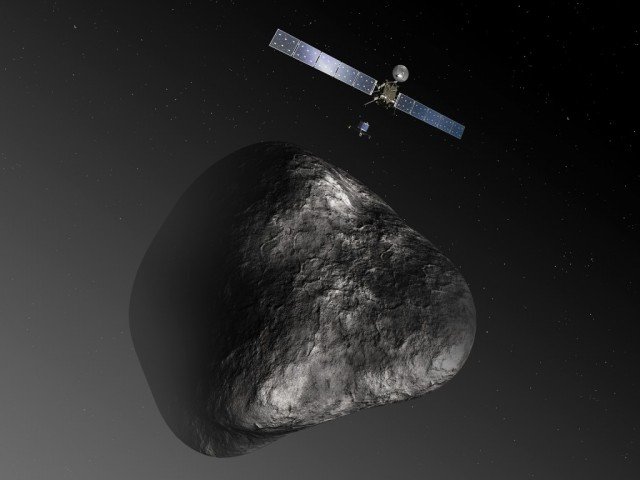Rosetta probe arrives at comet 67P
European Space Agency’s Rosetta probe has arrived at comet 67P after a 10-year chase.
In a first for space history, the spacecraft was maneuvered alongside a speeding body to begin mapping its surface in detail.
The European spacecraft fired its thrusters for six and a half minutes to finally catch up with comet 67P/Churyumov-Gerasimenko.
“We’re at the comet!” said Sylvain Lodiot of the ESA operations centre in Germany.
“After 10 years, five months and four days travelling towards our destination, looping around the Sun five times and clocking up 6.4 billion km, we are delighted to announce finally <<we are here>>,” said Jean-Jacques Dordain, director general of ESA.
Launched on board an Ariane rocket in March 2004, Rosetta has taken a long route around our Solar System to catch up with comet 67P.
In a series of fly-pasts, the probe used the gravity of the Earth and Mars to increase its speed during the 6 billion km chase.
To save energy, controllers at ESA’s centre in Darmstadt, Germany, put Rosetta into hibernation for 31 months.
In January they successfully woke the craft from its slumber as it began the final leg of the daring encounter.
For the past two months, Rosetta has been carrying out a series of maneuvers to slow the probe down.
The comet is travelling at 55,000km per hour (34,175 mph). The spacecraft’s speed has been adjusted so that in relative terms it will be flying beside the comet at a slow walking pace of 1m/sec (2.2mph).
At a distance of 550 million km from the Earth, messages are taking over 22 minutes to get to Rosetta.
The distances involved are so great that the complex final command sequence for Wednesday’s crucial thruster burn had to be issued on Monday night.
Rosetta will have to continue to fire its thrusters every few days to maintain a hyperbolic orbit at 100km above the rotating rock.
The craft will then travel alongside the comet for the next 15 months, studying it with a range of instruments.
Rosetta has been taking increasingly detailed photographs of 67P as it gets closer. The mysterious comet has been dubbed the “rubber duck”, as some images seem to show the familiar shape as it twirls in space.
[youtube 8vKvGE04tkg 650]

